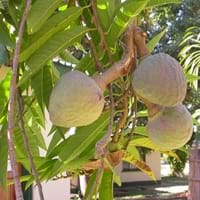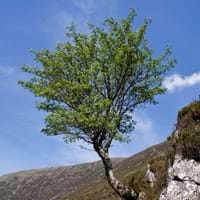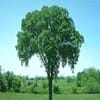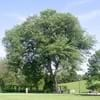Life Span
Perennial
Perennial
Origin
Asia, Caribbean, Central America
Asia, Europe, Northern Africa
Types
Not Available
Sorbus aucuparia fenenkiana, Sorbus aucuparia glabrata, Sorbus aucuparia praemorsa
Habitat
secondary forest, Tropical Forests
Temperate Regions
USDA Hardiness Zone
3-8
3-7
Sunset Zone
1a, 1b, 2a, 2b, 3a, 3b, 4, 5, 6, 7, 8, 9, 10, 11, 12, 13, 14, 15, 16, 17
A1, A2, A3, 1a, 1b, 2a, 2b, 3a, 3b, 4, 5, 6, 7, 8, 9, 10, 14, 15, 16, 17
Habit
Pyramidal
Oval or Rounded
Flower Color
Light Yellow
White
Flower Color Modifier
Bicolor
Bicolor
Fruit Color
Gray Green, Sandy Brown
Orange, Yellow
Leaf Color in Spring
Green
Green
Leaf Color in Summer
Dark Green
Green
Leaf Color in Fall
Yellow, Light Yellow, Yellow green, Sandy Brown, Ivory
Dark Green
Leaf Color in Winter
Not Available
Dark Green
Leaf Shape
Lanceolate
Pinnate
Plant Season
Spring, Summer, Fall
Spring, Fall
Sunlight
Full Sun, Partial Sun
Full Sun, Partial Sun
Growth Rate
Medium
Medium
Type of Soil
Clay, Loam
Clay, Loam, Sand
The pH of Soil
Acidic, Neutral, Alkaline
Acidic, Neutral
Soil Drainage
Well drained
Average
Bloom Time
Early Summer
Late Spring
Tolerances
Pollution, Drought
Not Available
Where to Plant?
Ground
Ground
How to Plant?
Grafting, Seedlings
Budding, Grafting, Stem Cutting
Plant Maintenance
Medium
Medium
Watering Requirements
Average Water Needs
Do Not over Water, Water in the early morning hours
In Summer
Lots of watering
Lots of watering
In Spring
Moderate
Moderate
In Winter
Average Water
Average Water
Soil pH
Acidic, Neutral, Alkaline
Acidic, Neutral
Soil Type
Clay, Loam
Clay, Loam, Sand
Soil Drainage Capacity
Well drained
Average
Sun Exposure
Full Sun, Partial Sun
Full Sun, Partial Sun
Pruning
Prune in the growing season, pruning needed for strong structure, Remove dead branches
Remove dead or diseased plant parts, Trim each shoot back to the first set of leaves
Fertilizers
All-Purpose Liquid Fertilizer, Compost, High phosphorus
All-Purpose Liquid Fertilizer, Doesn't require fertilization when grown in rich soil
Pests and Diseases
Aphids, Downy mildew, Leaf rust, Mites, Squirrels
Aphids, blister mites, Canker, fireblight, sawflies, Silver leaf
Plant Tolerance
Salt and Soil Compaction, Sun
Not Available
Flowers
Insignificant
Yes
Flower Petal Number
Single
Single
Foliage Texture
Coarse
Fine
Foliage Sheen
Glossy
Matte
Attracts
Butterflies, Hummingbirds, Not Available, Squirrels
Birds
Allergy
Nausea, Vomiting
Anxiety, Depression, High blood cholestrol, High blood pressure, Pain, Stress
Aesthetic Uses
Not Available
along a porch, deck or patio, Showy Purposes
Beauty Benefits
Anti-ageing, Maintains teeth healthy, Remove blemishes
Not Available
Environmental Uses
Air purification, Food for animals, Food for birds, Shelter for wildlife
Air purification, Food for birds, Shadow Tree
Medicinal Uses
Antibiotic, anti-cancer, Anti-oxidant, Cardiovascular problems, Diarrhea, Fever, Improve heart health
Diarrhea, Inflammation, Laxative, Urinary tract problems, Vitamin C
Part of Plant Used
Fruits
Bark, Fruits, Wood
Other Uses
Culinary use, Grown for shade, Oil is used in perfume, soaps, creams, etc., Used for its medicinal properties
Used for its medicinal properties, Used for woodware
Used As Indoor Plant
No
No
Used As Outdoor Plant
Yes
Yes
Garden Design
Feature Plant, Fruit / Fruit Tree, Shade Trees
Feature Plant, Mixed Border, Topiary / Bonsai / Espalier
Botanical Name
Annona reticulate
Sorbus aucuparia
Common Name
wild-sweetsop, bullock's-heart, ox-heart
Rowan, Mountain ash
In Hindi
ramphal
रोवाण पौधा
In German
Netzannone
Rowan Tree
In French
cachiman, cœur de bœuf
Rowan Tree
In Spanish
Annona reticulata
Rowan Tree
In Greek
Ramphal
Rowan Tree
In Portuguese
coração-de-boi
Árvore de Rowan
In Polish
Flaszowiec siatkowaty
Rowan Tree
In Latin
Ramphal
Rowan ligno
Phylum
Magnoliophyta
Magnoliophyta
Class
Magnoliopsida
Magnoliopsida
Order
Magnoliales
Rosales
Family
Tiliaceae
Rosaceae
Clade
Angiosperms, Magnoliids
Angiosperms, Eudicots, Rosids
Tribe
Annoneae
Not Available
Subfamily
Annonoideae
Not Available
Number of Species
Not Available
Importance of Ramphal and Rowan Tree
Want to have the most appropriate plant for your garden? You might want to know the importance of Ramphal and Rowan Tree. Basically, these two plants vary in many aspects. Compare Ramphal and Rowan Tree as they differ in many characteristics such as their life, care, benefits, facts, etc. Every gardener must at least have the slightest clue about the plants he wants to plant in his garden. Compare their benefits, which differ in many ways like facts and uses. The medicinal use of Ramphal is Antibiotic, anti-cancer, Anti-oxidant, Cardiovascular problems, Diarrhea, Fever and Improve heart health whereas of Rowan Tree is Diarrhea, Inflammation, Laxative, Urinary tract problems and Vitamin C. Ramphal has beauty benefits as follows: Anti-ageing, Maintains teeth healthy and Remove blemishes while Rowan Tree has beauty benefits as follows: Anti-ageing, Maintains teeth healthy and Remove blemishes.
Compare Facts of Ramphal vs Rowan Tree
How to choose the best garden plant for your garden depending upon its facts? Here garden plant comparison will help you to solve this query. Compare the facts of Ramphal vs Rowan Tree and know which one to choose. As garden plants have benefits and other uses, allergy is also a major drawback of plants for some people. Allergic reactions of Ramphal are Nausea and Vomiting whereas of Rowan Tree have Anxiety, Depression, High blood cholestrol, High blood pressure, Pain and Stress respectively. Having a fruit bearing plant in your garden can be a plus point of your garden. Ramphal has no showy fruits and Rowan Tree has showy fruits. Also Ramphal is not flowering and Rowan Tree is flowering. You can compare Ramphal and Rowan Tree facts and facts of other plants too.





